This article has been reviewed according to Science X's editorial process and policies. Editors have highlighted the following attributes while ensuring the content's credibility:
fact-checked
proofread
Scientists propose adapting a Mars ISRU system to the changing Mars environment
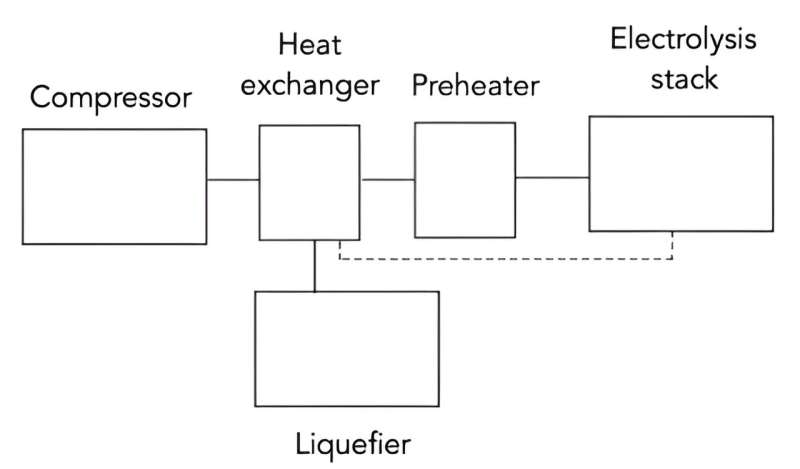
Human missions to Mars will require a substantial launch vehicle to ascend from Mars to rendezvous with a waiting Earth return vehicle in Mars orbit. For an ascending crew of 6, the current best estimate of oxygen propellants required for ascent is about 30 metric tons. Producing oxygen for ascent propellants and possibly life support from the indigenous CO2 on Mars, rather than bringing oxygen to Mars from Earth, is of significant benefit.
The oxygen production is accomplished through a process known generically as in situ resource utilization (ISRU). Since the Mars Oxygen ISRU Experiment (MOXIE) Project demonstrated operation of a prototype electrolysis system for converting Martian CO2 to O2 on Mars with great success, it is now appropriate to investigate scaling up this prototype to a full-scale system.
In a research paper recently published in Space: Science & Technology, Donald Rapp and Eric Hinterman modeled the performance of a full-scale Mars in situ resource utilization (ISRU) system to produce 30 metric tons of liquid O2, operated for 14 months as the Mars environment changes diurnally and seasonally.
First, the authors introduce the ISRU system layout, requirements, and settings. The simplified layout of the ISRU system is shown in Fig. 1. The heart of the system is the stack (or, more likely, a set of stacks) of electrolysis cells, producing a flow of O2 out of the anode and a mixture of CO, CO2, and inert gases in the cathode exhaust. While the process operates, a compressor first pulls Mars atmosphere into the system and compresses it from Mars pressure to stack pressure.
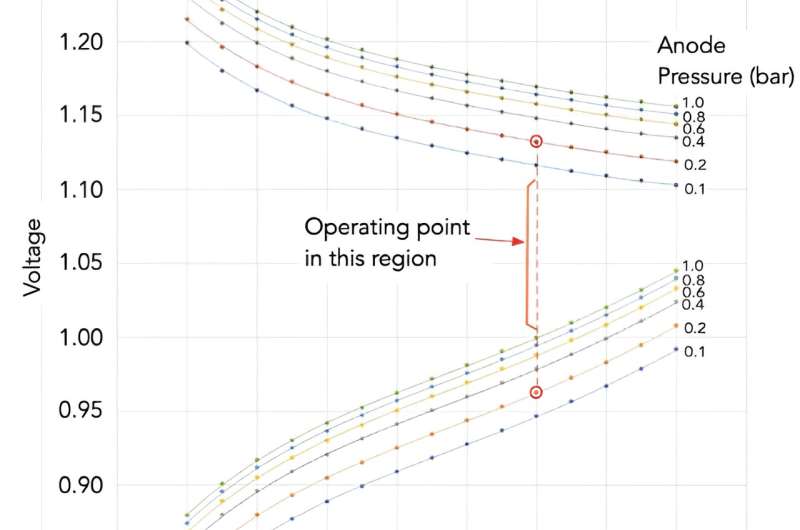
A heat exchanger recuperates some heat from the exhaust gases to incoming gas from Mars, and this gas is preheated to stack temperature before entering the stack. After the electrolysis in the stack, the effluent from the stack is fed back to the heat exchanger to prewarm incoming Mars gas, and the cathode exhaust is vented, while the anode exhaust is fed to the liquefier.
Moreover, it is critical that the voltage across the electrolytic cells of the stack(s) must be greater than the Nernst voltage for the oxygen production reaction (0.96 V) and less than the Nernst voltage for side reaction that deposits carbon (1.13 V). The system is required to be on a 14-month (420-sol) run with an average oxygen production rate of 3.0 kg/h to produce a total of 30240 kg of oxygen over this period. There are also several control schemes.
In option 1, the electrolysis stacks and the liquefier are operated at constant flow rate 3.0 kg/h, while the compressor revolutions per minute (RPM) is controlled to be greater when the Mars density is lower, and vice versa. In control option 2a, the RPM is always maintained at 3325, and the compressor is the same size as in control option 1, but the number of cells in the stacks is reduced.
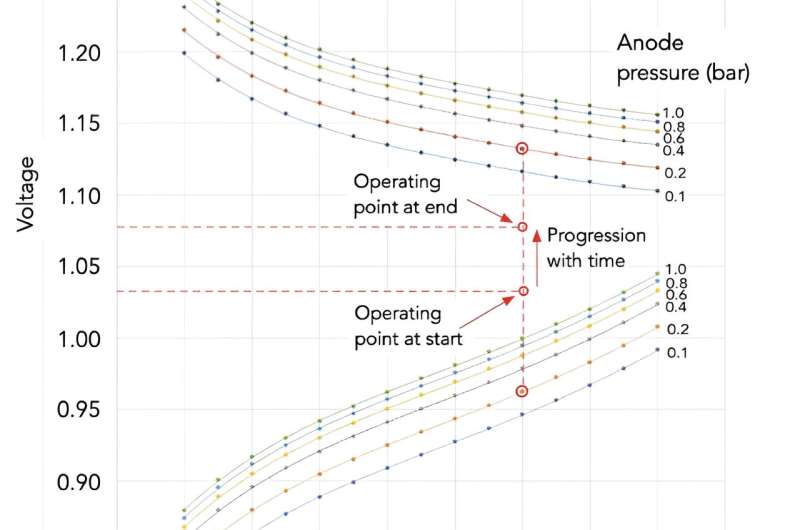
In control option 2b, the RPM is always maintained at 3325, and the number of cells is the same as in control option 1, but the size of the compressor is reduced. In control option 2c, the number of cells and compressor size are the same size as in control option 1, but the RPM is always maintained at 2705.
Then, the authors examine the intrinsic area-specific cell resistance (iASR), current density (J), and flow rate in different control options. The basic relationship: Vop = + Vother + (iASR)(J) is used, in which Vop is the average operating voltage applied to a cell; is the Nernst potential for O2 production, averaged across a cell; Vother is a voltage added to balance the equation.
In addition, anode pressure = cathode pressure = 0.2 bar, utilization = 0.60, and iASR is assumed to start at 1.00 ohm-cm2 and increase to 1.20 ohm-cm2 after 420 sols of operation. In control option 1, the required cell area to produce 3 kg/h of oxygen is AT = 83750 cm2.
-
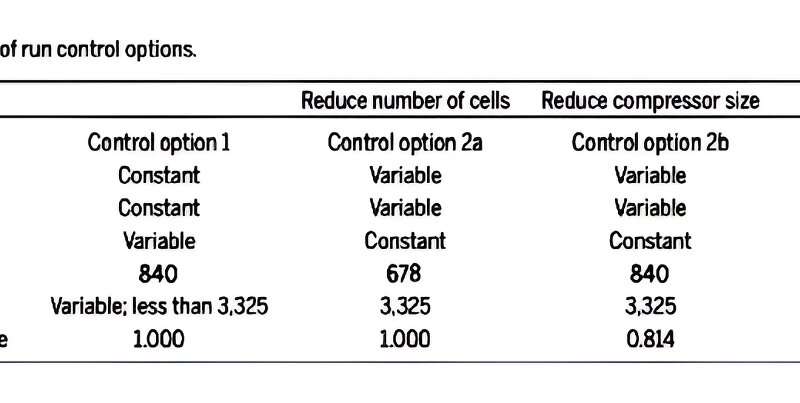
Characteristics of run control options. Credit: Space: Science & Technology -
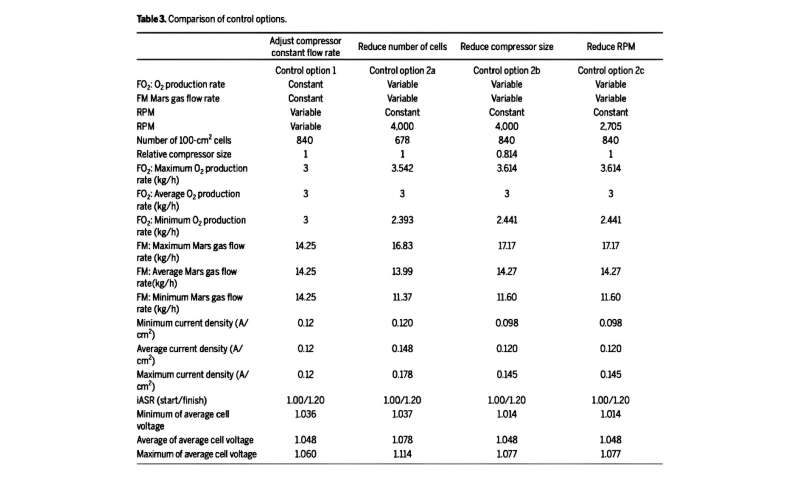
Comparison of control options. Credit: Space: Science & Technology
With cells of area 100 cm2 each, this requires 840 cells. The span of cell-operating voltages is Max Vop = 1.060, Avg. Vop = 1.048, and Min Vop = 1.036. The RPM varies from 3325 at minimum density, to 2706 at average density, to 2251 at maximum density. In control option 2a, Max Vop = 1.114, Avg. Vop = 1.078, and Min Vop = 1.037.
The maximum average cell voltage is perilously close to the Nernst voltage for carbon formation, and considering the uncertainties in estimating iASR, this option is unacceptable. In control option 2b, Max Vop = 1.077, Avg. Vop = 1.048, and Min Vop = 1.014. In control option 2c, Max Vop = 1.077, Avg. Vop = 1.048, and Min Vop = 1.014, which are essentially the same as for control option 2b.
Finally, authors discuss the results and draw conclusions. As for the solid oxide electrolysis (SOXE) system, the electrochemical power is 14.6 kW for control option 1 and 4.87*FO2 kW for control option 2. The preheat power is estimated to be ~0.5 kW. The heat loss is approximately 0.35 kW, although it depends on atmospheric conditions. The total SOXE power for any control option is the sum of the electrochemical power, preheating power, and heat loss power.
The runs for the various control options yield the results shown in Table 4. As for the compressor, the adiabatic efficiency is a function of inefficiencies of its components, including motor losses, seal friction, and bearing friction. Table 5 summarizes power requirements for compression in various control options. The rate of heat removal from the system by the cryocooler is calculated as the cooling required to lower the temperature of the gaseous oxygen to its boiling point and liquefy it. The result is shown in Table 6. Total power including all contributions is concluded in Table 7. All tables can be viewed in the open access paper.
More information: Donald Rapp et al, Adapting a Mars ISRU System to the Changing Mars Environment, Space: Science & Technology (2023). DOI: 10.34133/space.0041
Provided by Beijing Institute of Technology Press Co., Ltd




















